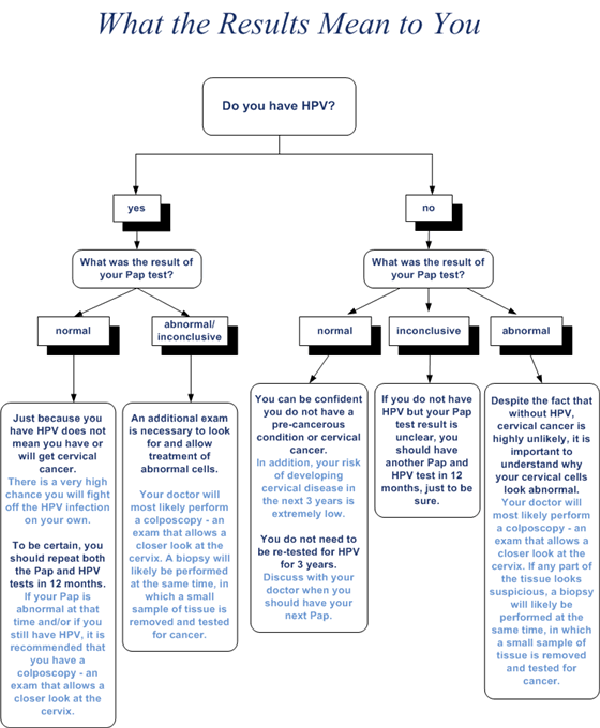|
My doctor told me that
my Pap smear showed "atypical cells" but
NO high-risk HPV has been detected
| |
What does it mean when my Pap smear has "atypical cells"?
|
|
|
This is a borderline or "inconclusive" result. When a trained cytologist reviews the cells with a microscope the cells appears slightly "funny-looking" and are reported as atypical. The Pap smear will officially report the term Atypical Squamous Cells of Undetermined Significance which is referred to as (ASCUS): Squamous cells are simply those that line the outer part of the cervix. The term undetermined significance means the examiner is not sure why the cells look abnormal. It may be due to a minor vaginal infection or inflammation but it may be due to dysplasia.
|
What does it mean if my High-risk HPV test is negative?
|
When the Pap smear is inconclusive then the addition of the HPV test will provide more information. When there is NO high-risk HPV detected then you do not need to worry that the "funny" appearance of the cells is due to dysplasia. Since HPV is the cause of dysplasia, without the presence of HPV, there is no concern about dysplasia. Overall, this result is considered a normal Pap smear result.
|
|
But if the cells are atypical looking shouldn't I still be concerned?
|
|
| The cells may look atypical because of inflammation due to a mild vaginal infection, the presence of other things that may obscure the evaluation of the Pap smear or just an artifact of reading the Pap. This is why women are advised to schedule their Pap smear when they do not have their period or do not have or are not treating a vaginal infection.
|
When should I repeat the Pap smear and HPV test?
|
Your Pap and HPV test should be repeated in one year (rather than 2-3 years if the Pap is normal with no HPV detected.) There is more concern if the Pap is normal when HPV is detected due to the risk of dysplasia.
|
|
 |
| www.thehpvtest.com |
|
|
|